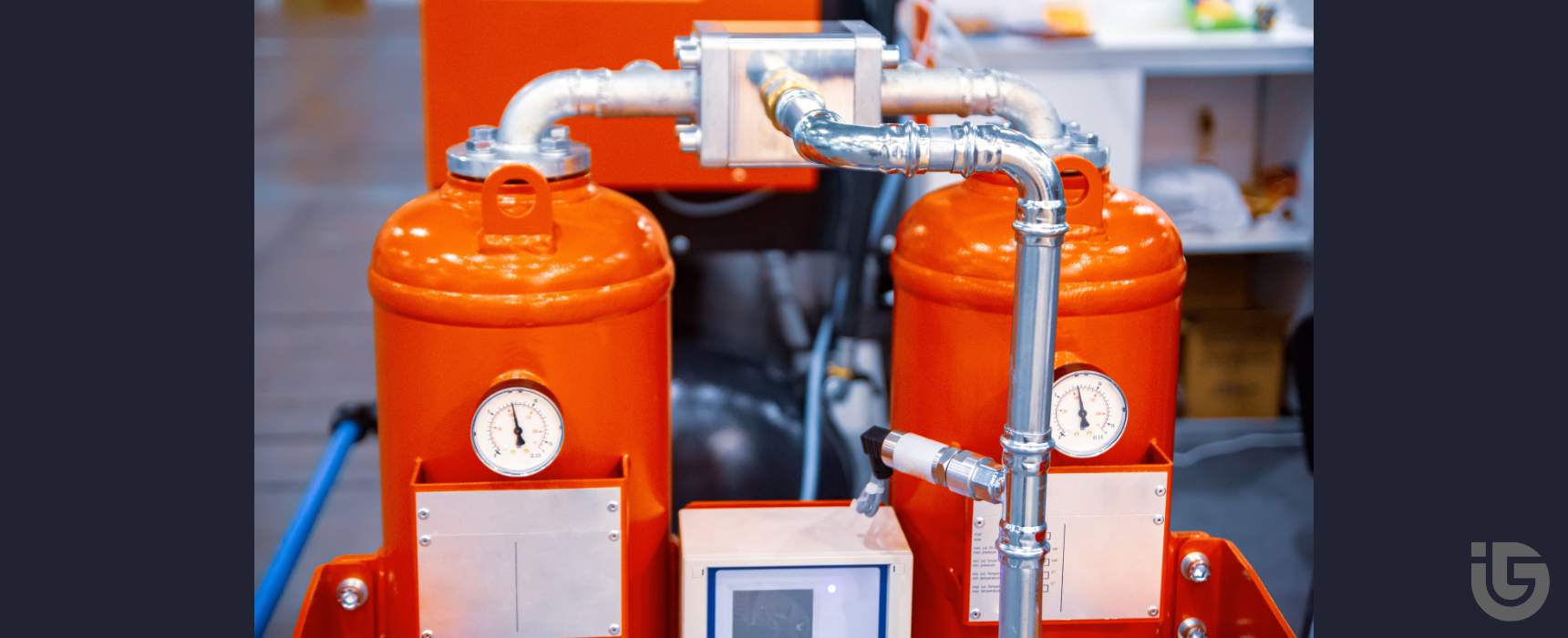Ensuring the quality and efficiency of compressed air systems is paramount in manufacturing and industrial processes. Compressed air demands meticulous attention in safeguarding it from the detrimental effects of moisture. This is where compressed air drying steps in—a crucial process in eliminating moisture and humidity from compressed air lines to guarantee the delivery of dry, moisture-free air.
The repercussions of moisture within compressed air systems can significantly impact operations. Moisture in compressed air can lead to issues like corrosion, equipment damage, and compromised product quality. It is crucial to prevent this moisture in environments like large factories during manufacturing, where pneumatic tools, motors, and valves are necessary in the production line.
While there are a few methods to dry compressed air, the most common are refrigerated air drying and desiccant air drying, typically using activated alumina. The choice of dryer depends on the industry’s specific needs or application where dry air is essential.
Refrigerated air drying works like a household refrigerator. This air dryer uses a heat exchanger and refrigeration system to cool the compressed air, prompting the moisture to condense. Subsequently, the air and water undergo separation, and the water is drained. This process mirrors the principles of a dehumidifier. The dried air then undergoes reheating before exiting the system, preventing re-condensation as it moves through pipelines.
Conversely, desiccant air drying involves channeling compressed air through a desiccant material, with activated alumina being the most prevalent. Activated alumina possesses a high surface area and an intricate network of pores, offering an expansive surface for adsorbing moisture molecules. As air courses through the bed of activated alumina, moisture adheres to the beads, leaving the air dry and moisture-free.
However, as the activated alumina accumulates moisture over time, it reaches a saturation point. Regeneration becomes imperative to sustain the efficacy of the desiccant. Typically, regeneration involves diverting a portion of dry air from the drying process to the desiccant bed or applying direct heat to expel the moisture from the beads. Activated alumina stands out for its capability to undergo multiple regeneration cycles, rendering it a more economically viable choice for compressed air drying systems.
Each air drying method offers its own set of advantages and is selected based on criteria such as the required dew point, volume of air requiring drying, energy considerations, and the specific demands of the industrial application. Regardless of the methodology, the significance of compressed air drying for compressed air systems, along with activated alumina’s role in this process, cannot be overstated.


